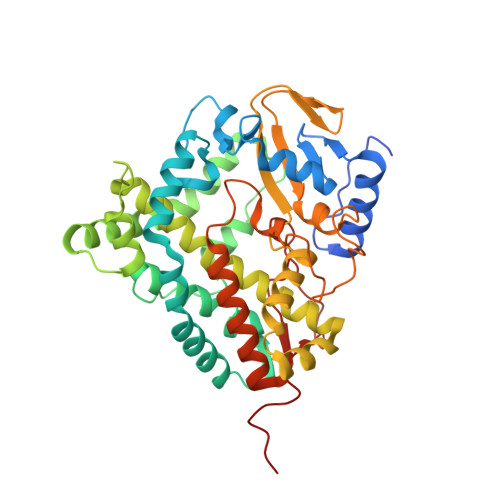Azole Drugs Trap Cytochrome P450 Eryk in Alternative Conformational States.
Montemiglio, L.C., Gianni, S., Vallone, B., Savino, C.(2010) Biochemistry 49: 9199
- PubMed: 20845962
- DOI: https://doi.org/10.1021/bi101062v
- Primary Citation of Related Structures:
2JJP, 2XFH - PubMed Abstract:
EryK is a bacterial cytochrome P450 that catalyzes the last hydroxylation occurring during the biosynthetic pathway of erythromycin A in Streptomyces erythraeus. We report the crystal structures of EryK in complex with two widely used azole inhibitors: ketoconazole and clotrimazole. Both of these ligands use their imidazole moiety to coordinate the heme iron of P450s. Nevertheless, because of the different chemical and structural properties of their N1-substituent group, ketoconazole and clotrimazole trap EryK, respectively, in a closed and in an open conformation that resemble the two structures previously described for the ligand-free EryK. Indeed, ligands induce a distortion of the internal helix I that affects the accessibility of the binding pocket by regulating the kink of the external helix G via a network of interactions that involves helix F. The data presented thus constitute an example of how a cytochrome P450 may be selectively trapped in different conformational states by inhibitors.
- Department of Biochemical Sciences, Sapienza University of Rome and CNR Institute of Molecular Biology and Pathology, Piazzale A. Moro 5, Rome, Italy.
Organizational Affiliation:



















